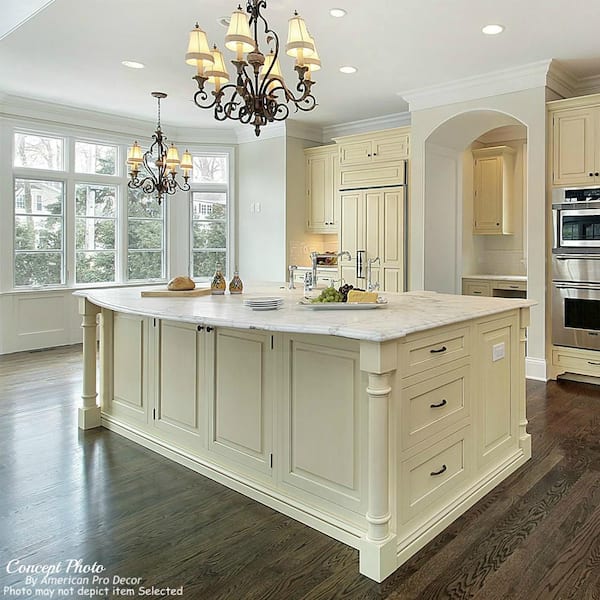A Guide to Choosing the Perfect Legs For Kitchen Island for Your Home
Choosing the suitable legs for your kitchen area island is a nuanced decision that impacts both the functionality and visual appeal of this main room. As you take into consideration these aspects, it ends up being apparent that the best legs can transform not only the appearance of your kitchen area yet additionally its usability for years to come.

Recognizing Kitchen Area Island Legs
When choosing legs for a kitchen island, it's important to recognize their practical and visual functions in the overall layout. The legs function as a critical support system, making certain stability and longevity for the island, which typically operates as a work area, eating location, or gathering area. Consequently, the option of material and building strategy must be robust sufficient to hold up against daily use and prospective wear.
Along with their architectural responsibilities, legs contribute considerably to the island's aesthetic charm. They can boost the cooking area's design, whether via traditional, contemporary, or eclectic designs. The height and percentage of the legs are also essential factors to consider; they have to harmonize with the island's countertop elevation while making certain comfy seating for those using the area.
Moreover, the leg style can influence the overall circulation of the cooking area. Open, ventilated leg designs can produce a sense of agility, while strong, considerable legs may communicate a much more based and steady visual - Legs For Kitchen Island. Understanding these practical and visual facets will direct home owners in making informed selections that enhance their kitchen's style and improve its functionality
Popular Styles and Products
The choice of legs for a cooking area island incorporates a range of popular styles and materials, each offering unique attributes that can enhance both capability and visual appeals. Among the most desired designs are modern, rustic, and conventional. Contemporary legs typically feature streamlined, minimal styles that highlight simplicity and clean lines, making them perfect for modern-day kitchens. Rustic designs, on the other hand, accept natural components and frequently display redeemed timber or troubled surfaces, adding heat and appeal to the area. Typical legs commonly display luxuriant details and workmanship, improving timeless kitchen styles.

Elevation and Security Factors To Consider

The legs of the kitchen island should supply ample support, ensuring that the structure can withstand everyday usage without tottering or shifting. Product selection plays a substantial role in stability; steel legs, for instance, tend to offer greater toughness compared to wood.
Matching Your Cooking Area Visual
Choosing the best legs for your kitchen island goes beyond functionality; it also plays a substantial role in the general aesthetic of the space (Legs For Kitchen Island). When selecting legs, take review into consideration the layout style of your kitchen.
Legs that complement or comparison with your island's surface area and bordering cabinetry can produce visual consistency or striking focal factors. Furthermore, think about the surface of the legs; matte, shiny, or distinctive coatings can considerably influence the general feel of the kitchen area.
Installment and Upkeep Tips
Setting up kitchen island legs calls for cautious focus to detail to make sure both security and aesthetic appeal. Begin by choosing a suitable location for your island, ensuring it is degree and has ample room for movement. Use a stud finder to find wall surface studs if you are attaching the legs to a wall surface or making use of braces for added assistance. Mark the positioning of the legs precisely prior to exploration.
When safeguarding the legs, use premium screws and, if necessary, timber glue for added toughness. For steel legs, ensure that you are using suitable anchors and devices to avoid damages look at more info to your flooring. It is suggested to inspect for levelness after installment, making changes as required to avoid wobbling.
Tidy the click here for more info legs with an ideal cleaner, avoiding unpleasant products that may scrape the surface area. By following these installment and maintenance pointers, you can guarantee that your kitchen island legs remain both useful and aesthetically appealing.
Verdict
In verdict, picking the proper legs for a cooking area island demands cautious consideration of height, stability, and aesthetic compatibility. Ultimately, thoughtful leg choice plays a vital role in elevating both the functionality and style of the kitchen space.
When picking legs for a kitchen island, it's crucial to comprehend their aesthetic and practical functions in the overall design. Open, airy leg styles can produce a sense of lightness, while strong, considerable legs might convey an extra grounded and stable visual. The legs of the cooking area island must supply sufficient assistance, making certain that the structure can stand up to everyday use without wobbling or changing.Mounting cooking area island legs needs careful attention to detail to ensure both stability and aesthetic appeal.In conclusion, choosing the ideal legs for a kitchen area island necessitates mindful factor to consider of elevation, security, and aesthetic compatibility.